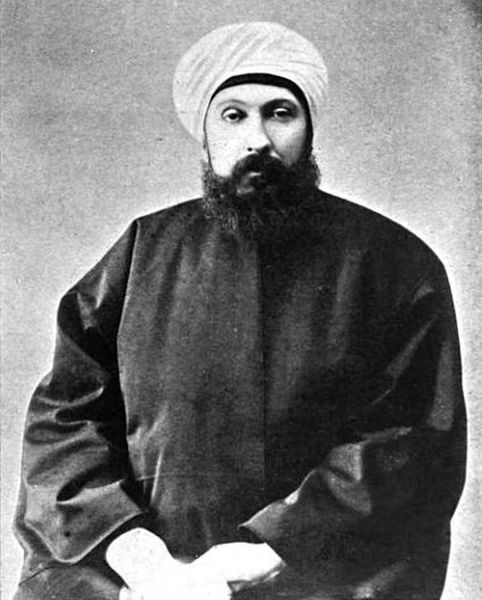Muhammad al-Tahir ibn Ashur
Muḥammad al-Ṭāhir ibn ʿĀshūr was a graduate of University of Ez-Zitouna and a well known Islamic scholar. He studied classical Islamic scholarship with reform-minded scholars. He became a judge then Shaykh al-Islām in 1932. He was a writer and author on the subject of reforming Islamic education and jurisprudence. He is best remembered for his Qur'anic exegesis, al-Tahrir wa'l-Tanwir.
Portrait of Mohamed Tahar Ben Achour at the Tunisian Academy of Sciences, Letters, and Arts (Carthage).
Mohamed Tahar Ben Achour with Taha Hussein, Mohamed Fadhel Ben Achour and Mohamed Abdelaziz Djaït (Tunis, 1957).
Shaykh al-Islām was used in the classical era as an honorific title for outstanding scholars of the Islamic sciences. It first emerged in Khurasan towards the end of the 4th Islamic century. In the central and western lands of Islam, it was an informal title given to jurists whose fatwas were particularly influential, while in the east it came to be conferred by rulers to ulama who played various official roles but were not generally muftis. Sometimes, as in the case of Ibn Taymiyyah, the use of the title was subject to controversy. In the Ottoman Empire, starting from the early modern era, the title came to designate the chief mufti, who oversaw a hierarchy of state-appointed ulama. The Ottoman Sheikh al-Islam performed a number of functions, including advising the sultan on religious matters, legitimizing government policies, and appointing judges.
Shaykh al-Islām in different languages
Sheikh ul-islam Mehmet Cemaleddin Efendi during the reign of Ottoman Sultan and Caliph Abdul Hamid II
Book cover image, printed in 1906 in Cairo, written on it: Volume II of Tabaqat al-Shafi'iyya al-Kubra by Shaykh al-Islam Taj al-Din al-Subki





